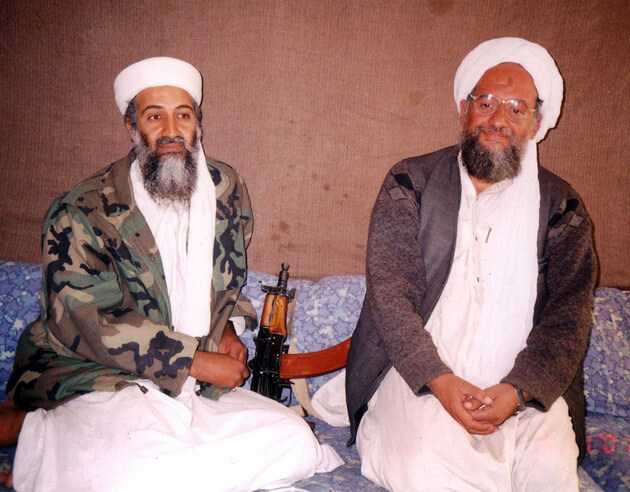A precision bomb killed Zawahiri in his safe house in Kabul
Ayman al-Zawahiri, who has been killed by a US drone strike in Afghanistan, was often referred to as the chief ideologue of al-Qaeda. Few are blaming Pakistani agencies to give away Zawahiri in order to gain some brownie points from the US and teach a lesson to the Taliban.
An eye surgeon who helped found the Egyptian Islamic Jihad militant group, he took over the leadership of al-Qaeda following the killing by US forces of Osama Bin Laden in May 2011.
Before that, Zawahiri was considered Bin Laden’s right-hand man and believed by some experts to have been the “operational brains” behind the 11 September 2001 attacks in the United States. Zawahiri was number two – behind only Bin Laden – in the 22 “most wanted terrorists” list announced by the US government in 2001 and had a $25m bounty on his head.
In the years after the attacks, Zawahiri emerged as al-Qaeda’s most prominent spokesman, appearing in 16 videos and audiotapes in 2007 – four times as many as Bin Laden – as the group tried to radicalize and recruit Muslims around the world.
Born in the Egyptian capital, Cairo, on 19 June 1951, Zawahiri came from a respectable middle-class family of doctors and scholars. His grandfather, Rabia al-Zawahiri, was the grand imam of al-Azhar, the center of Sunni Islamic learning in the Middle East, while one of his uncles was the first secretary-general of the Arab League.
Zawahiri became involved in political Islam while still at school and was arrested at the age of 15 for being a member of the outlawed Muslim Brotherhood – Egypt’s oldest and largest Islamist organization.
Zawahiri took over the leadership of Egyptian Islamic Jihad after it re-emerged in 1993, and was a key figure behind a series of attacks by the group on Egyptian government ministers, including the Prime Minister, Atif Sidqi. The group’s campaign to topple the government and set up an Islamic state in the country during the mid-1990s led to the deaths of more than 1,200 Egyptians.
In 1997, the US state department named him as leader of the Vanguards of Conquest group – a faction of Islamic Jihad thought to have been behind the massacre of foreign tourists in Luxor the same year.
In the years following the Soviet withdrawal of Afghanistan, he is believed to have lived in Bulgaria, Denmark, and Switzerland, and sometimes used a false passport to travel to the Balkans, Austria, Yemen, Iraq, Iran, and the Philippines.
In 1997, Zawahiri is believed to have moved to the Afghan city of Jalalabad, where Osama Bin Laden was based. A year later, Egyptian Islamic Jihad joined five other radical Islamist militant groups, including Bin Laden’s al-Qaeda, in forming the World Islamic Front for Jihad against Jews and Crusaders.
The front’s first proclamation included a fatwa, or religious edict, permitting the killing of US civilians. Six months later, two simultaneous attacks destroyed the US embassies in Kenya and Tanzania, killing 223 people.
Zawahiri was one of the figures whose satellite telephone conversations were used as proof that Bin Laden and al-Qaeda were behind the plot.
Two weeks after the attacks, the US bombed the group’s training camps in Afghanistan. The next day, Zawahiri telephoned a Pakistani journalist and said: “Tell America that its bombings, its threats, and its acts of aggression do not frighten us. The war has only just begun.”
In the years following Bin Laden’s death, US air strikes killed a succession of Zawahiri’s deputies, weakening his ability to coordinate globally. And in recent years, Zawahiri had become a remote and marginal figure, only occasionally issuing messages.
The US will herald his death as a victory, particularly after the chaotic withdrawal from Afghanistan last year, but Zawahiri held relatively little sway as new groups and movements such as Islamic State have become increasingly influential.












